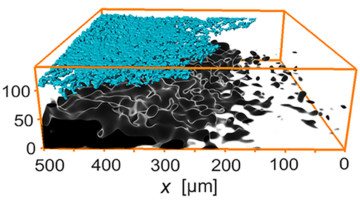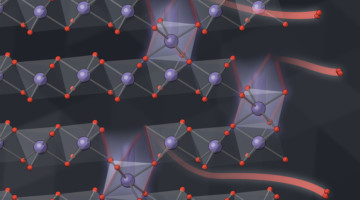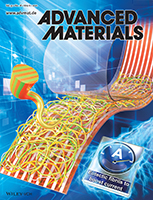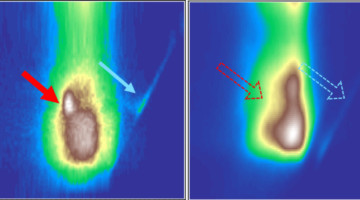Using 3D x-ray microtomography, researchers measured the lithiation levels of particles in Li-ion battery electrodes during charging. At faster charging rates, lithium metal accumulated on the electrode surface and created a “shadow effect,” a region of poor lithiation in the electrode at some distance away from the lithium plating. Read more »
Exquisitely Selective CO2 Reduction on Silver
Researchers electrochemically reduced CO2 to CO with nearly perfect selectivity over other products by adding an organic compound to the surface of a silver electrode. With theoretical analyses and ALS data, the work revealed the key role of the microenvironment in promoting the conversion of CO2, a greenhouse gas, into useful products. Read more »![]()
![]()
Coulombically-stabilized oxygen hole polarons enable fully reversible oxygen redox
We investigate oxygen redox in layered Na2−xMn3O7, a positive electrode material with ordered Mn vacancies. Our results establish a complete picture of redox energetics by highlighting the role of coulombic interactions across several atomic distances and suggest avenues to stabilize highly oxidized oxygen for applications in energy storage and beyond. Read more »
A Multiscale Picture of Oxygen Loss in Battery Electrodes
In lithium-ion batteries, oxygen atoms leak out of electrode particles as the lithium moves back and forth between electrodes. Now, researchers have measured this process at multiple length scales, showing how the oxygen loss changes the electrode’s structure and chemistry, gradually reducing the amount of energy it can store. Read more »
New Tools Link Catalytic Activity to Nanoscale Transformations
Transitioning to a clean hydrogen economy will require cheaper, more efficient ways to split water molecules. To address bottlenecks in the water-splitting process, researchers developed a suite of advanced tools, including a liquid flow cell that enables electrochemical studies of catalysts under working conditions. Read more »
High-Efficiency Organic Photovoltaics using Eutectic Acceptor Fibrils to Achieve Current Amplification
Researchers report the fabrication of ternary organic solar cells, achieving a significant JSC boost, by virtue of their optimized crystalline feature, with the formation of eutectic crystalline fibrils. The optimal morphology suppresses energetic disorder and nongeminate recombination, and increases charge transfer and transport, yielding a high efficiency of 17.84% with significant current amplification. Read more »
A Properly Tailored Tail Boosts Solar-Cell Efficiency
With the help of structural insights from the ALS, researchers optimized the fit between organic and inorganic ions in a perovskite solar-cell material. The work increased the material’s power-conversion efficiency and stability and opens up a new avenue for improving the current-carrier dynamics of a promising class of materials. Read more »![]()
![]()
X-Ray Study Recasts Role of Battery Material from Cathode to Catalyst
Researchers used the ALS to learn about a lithium-rich battery material that has been the subject of much study for its potential to extend the range of electric vehicles and the operation of electronic devices. Through a fundamental spectroscopic study, they not only clarified the reaction mechanism of this material, but also found a conceptually different use of it as a catalyst. Read more »
X-Ray Experiments, Machine Learning Could Trim Years Off Battery R&D
Scanning transmission x-ray microscopy at the ALS’s COSMIC beamline contributed to a battery study that used an innovative approach to machine learning to speed up the learning curve about a process that shortens the life of fast-charging lithium batteries. It represents the first time this brand of “scientific machine learning” was applied to battery cycling. Read more »
Study Shines New Light on Li-Battery Cathode Materials
Researchers clarified key reaction mechanisms in a Li-battery cathode material, revealing its surprising utility as a catalyst for next-gen batteries. The work refutes widely held ideas about reversible reactions in a highly debated material for Li-based batteries and expands the range of materials suitable for use in high-power batteries and fuel cells. Read more »![]()
![]()
- « Previous Page
- 1
- …
- 5
- 6
- 7
- 8
- 9
- …
- 16
- Next Page »









